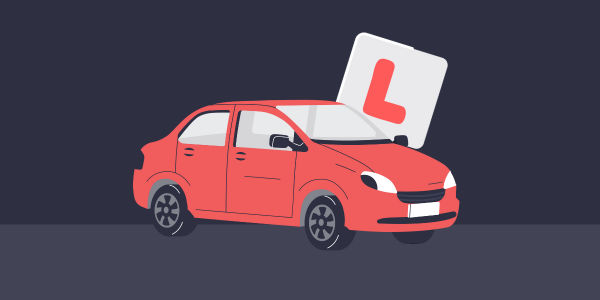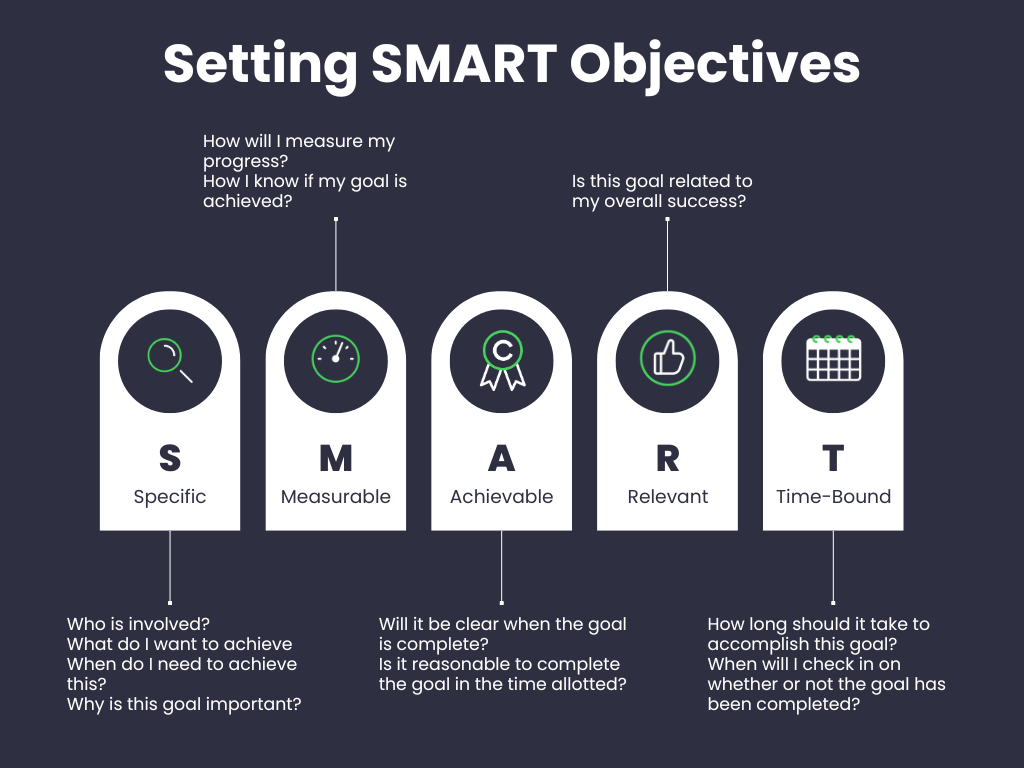
The Most Popular Cars for Learner Drivers
Discover the top 10 most popular cars for learner drivers in the UK, based on Collingwood Insurance data. Find the best car to learn to drive today.
In this article we offer a comprehensive guide to setting learning to drive goals and how to effectively set learning to drive milestones. We discuss the role of SMART goal setting, overcoming common fears and how using technology can enhance your learning to drive experience. Giving you all of the tools to help you become a more confident and competent driver.
Read more below or watch the video to find out how to set your learning to drive goals!
A great way to assess your current skills is to create a learning to drive checklist, or progress tracker that includes various skills and scenarios. Mark off what you are comfortable with and identify driving milestones that need more work. This could help you to visualise your progress and plan your next lesson or private practice accordingly. This is a good starting point to setting driving lesson goals and be on the way to becoming a full licence holder!
If you are unsure on your driving ability, test your skills in different conditions. Practise driving at night, on wet roads or in heavy traffic. By practising in various conditions, you are exposed to real world situations, which will help you understand how well you adapt and where you still need work.
There are also many great apps for learning to drive such as RoadHow, which comes free with all Collingwood Learner Driver Insurance policies, to take practice quizzes. This may help you find gaps in your knowledge. From this you can figure out if you need to improve your driving skills or read up on The Highway Code.
By understanding your current ability and where you need to improve you can then go on to setting driving goals, to improve your skills.
You may have heard of the term SMART objectives, it is a method for setting goals that are achievable. It stands for Specific, Measurable, Achievable, Relevant and Time-bound. Let’s think about how we could use SMART goals for learning to drive:
Specific: Be clear on your goal. Instead of saying “I want to be a good driver” which is hard to measure and is not specific. You could set a goal of “I want to be able to parallel park.” See how much easier that goal will be?
Measurable: Now your goal is specifically about parallel parking, a good measure could be “I want to be able to parallel park in three locations with no mistakes.”
Achievable: Your goal is now quite challenging, but still achievable with time and practice.
Relevant: The goal you set is relevant as parallel parking may come up on your driving test.
Time-bound: This means setting yourself a deadline. Having a time frame keeps you focused on your goal. For example, “I’ll be able to parallel park in three different locations without any mistakes by the end of the month” gives you a clear learning to drive goal to work toward. Just make sure it is attainable. You’re probably not going to be able to parallel park perfectly 1 week into your driving lessons so make sure you are not putting too much pressure on yourself.
Try creating your own SMART learning to drive goals to achieve your learning to drive objectives. You could choose hill starts or reversing into a parking bay for example. You can even break larger goals into smaller goals so they are easier to measure!
Alongside your driving lessons you can also take private practice which can be a good way to achieve your learning to drive goals. Creating a realistic driving practice schedule is important, especially when you are just starting to learn to drive
.It’s important to consider the frequency and duration of your practice schedule. Talk to the person who will be supervising your private practice and decide how long each drive will be. It may be best to start with shorter and more frequent sessions (around 30 minutes to an hour, 3-4 times a week) instead of infrequent and long sessions. The practice does not always need to be fully planned, it could just be a drive around the block or to the shops!
Plan and vary your route. Consider traffic congestion, or when car parks may be busy, depending on what skills you wish to focus on.
Include time for theory practice in your schedule. Spend time understanding road signs, rules and the theoretical side of learning to drive.
Don’t forget to consult the SMART goals you created, to help you maintain focus and create achievable driving objectives.
Many new learner drivers experience various challenges and fears when they’re first learning. But remember, driving fears and challenges can be overcome with practice, patience and time. Some challenges include:
Challenge: Many new drivers are intimidated by parallel parking, especially in busy areas where other drivers are waiting.
Overcoming It: Find an empty space in a car park where you can practise parallel parking without the pressure of other cars waiting. You could try using cones or markers to simulate the space. Allow your supervising driver/driving instructor to guide you through the process a few times until you feel more comfortable. They can also provide tips and corrections as you learn.
Challenge: Driving in heavy traffic can be stressful due to the proximity of other vehicles, frequent stopping and starting, and potential unpredictability of other drivers.
Overcoming It: Begin by practising in lighter traffic and gradually build up to busier times as you feel more comfortable. Always keep a safe following distance to give yourself time to react. Stay alert, watch the flow of traffic, and try to anticipate the actions of other drivers. Practising deep breathing can also help you stay calm.
Remember, it’s completely normal to have fears when you’re starting out. With patience, practice, and the right approach, you’ll find yourself becoming more and more confident in handling these driving challenges. Keep going, you’ve got this!
Technology and resources have come a long way in enhancing the experience for new learner drivers. Here we cover some tools and resources that can help you meet your learning to drive goals:
What They Are: There are apps for almost every aspect of driving, from theory test preparation to GPS apps that plan routes with less traffic or hazard perception apps.
How They Help: These apps can provide interactive and guided learning experiences, offer real-time feedback, and help build your road awareness.
Top Tip: Collingwood Learner Driver Insurance comes loaded with free access to the premium version of RoadHow learner driver app.
What They Are: Many professional driving instructors and experienced drivers share tutorials on techniques, tips for passing the practical test, and more.
How They Help: Watching these videos can give you a visual and practical understanding of concepts, driving manoeuvres, and what to expect during tests. This could help you to learn new things to help you towards your driving goals.
Top Tip: YouTube is packed with content from reducing test nerves to dealing with complex roundabouts.
What They Are: Cameras mounted on the dashboard of cars that record real-life situations.
How They Help: Watching and analysing dash cam footage can help you understand how to handle different scenarios on the road, learn from others’ mistakes, and become aware of how unpredictable the road can be.
Using a combination of technologies and resources can enhance your learning to drive process to meet your goals. They can provide additional practice, reinforce what you’ve learned, and prepare you for a wide range of driving experiences. Always remember, though, while technology can be a fantastic aid, nothing replaces the value of practice on real roads. Safe driving!
Alongside learning to drive with a registered driving instructor, private practice is a great way to get you test ready. Collingwood Learner Driver Insurance gives you the legal cover you need to practise outside of driving lessons in your own, a friend or a family member’s car.
Collingwood Learner Insurance protects the vehicle owner’s No Claims Bonus, so if the learner is driving and they were in an accident, the vehicle owners No Claims is safe. It may also be cheaper than being added as an additional driver to an existing car insurance policy.
Having your own learner driver insurance cover means you can practise at a time that is suitable to you. You will be able to focus specifically on your goals and master your skills!
When you are learning to drive, make sure you check in regularly and set goals for yourself. This can help you to know what to focus on and what needs more work. Which in the long run can help you to reach the ultimate driving goal of passing your test!
You will be logged out in seconds. Do you want to stay signed in?